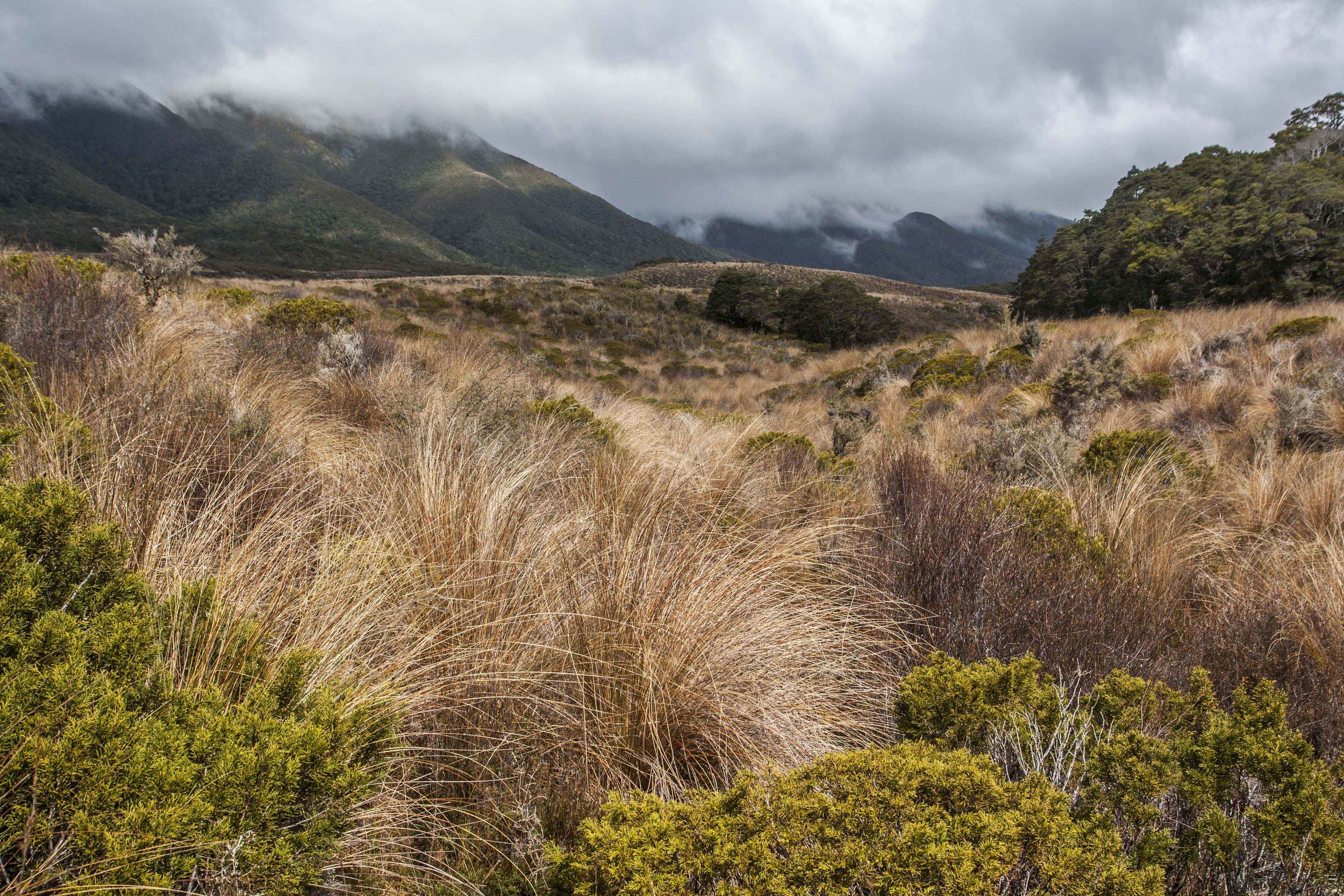This post picks up on the last one, describing my experience hiking the 78-km Heaphy Track, one of New Zealand’s seven “Great Walks.”
Great Walk, the work inspired by the trek, depicts a more purely linear journey than other worldviews to date, the main reason for the long and narrow format. As such it’s brought up considerations that haven’t come up in previous works, like endpoints, relative emphasis/salience of experiences along the way, and direction of “travel” and of the individual perspectives. (The orientation of the perspectives was determined mostly by compositional considerations, but I think whether the viewer is looking “ahead” or “backward” does matter to overall experience of the journey.) This approach is most applicable to places I’ve experienced on a single long hike rather than just wandering around without a single destination in mind. None of the other multi-day hikes I’ve done that don’t form a complete loop (the nearby Milford Track, Iceland’s Laugavegur trek, Mt. Kilimanjaro, the Inca Trail) have ended up on paper yet, but they will.
Great Walk, watercolor on paper, 25”x50”.
In sketching out composition options for Great Walk, I discovered that integrating moments covering the entire trek start to finish would result in an overly busy layout. I decided to leave out Day 4, downhill from the highest point of the trek to the finish, which I generally found to be less evocative and distinctive than the rest of the trip. Having already hiked uphill through the rainforest on the windward side of the route, the species were familiar and the overall feel of the forest was less luxuriant, particularly toward the end. Or, maybe I was just exhausted, kept awake all night worrying that my phone would die before the alarm went off at 5am, or I was just ready to return to civilization. In any case, I didn’t take many photos during those last few hours despite the sunniest weather of the trek.
Great Walk with a very rough overlay of the walking route. The numbers on the perspective views correspond to their locations on the satellite view below and the images representative of each experience.
Northeast corner of the South Island of New Zealand with the “painted” portion of the Heaphy Track in red. (The remainder of the trail, mostly the descent on Day 4, is in black.) The numbers correspond to the scenes depicted in Great Walk above and in the images below.
1. A dramatic beginning—Nikau palms along the beach.
2. Dry Riverbed behind the beach.
3. Rainforest behind the beach, with nikau palms.
4. Crossing a larger riverbed near the beginning of the ascent.
5. Climbing higher—view of a river valley below.
6. Montane rainforest—no more palms.
7. Climbing higher through “drier” forest.
8. Crossing the Gouland Downs.
9. The Gouland Downs.
10. Nearing the edge of the grassland.
11. Entering the forest again.
12. An understated end to the story (but not the walk).
13. View from the highest point of the trek, beginning of Day 4.
The big exception to this relative lack of drama/novelty on the last day was the view, from the exact high point of the trail just as the sun was coming up, of snowy mountains framed by tropical-looking heaths encrusted with ice. But I left that landscape out of the composition too, because I decided that the clearest “ecological narrative” from the uphill part of the trip was moving from the exotic and luxuriant to the familiar and subdued—the progression from “tropical” palm-fringed beaches to grassland and forest that at times looked not just “New Zealand temperate” but “Northern Hemisphere temperate,” seemingly a world away. As I wrote in the last post, this narrative might’ve felt more natural and dramatic in reverse, but in fact I like the subdued way that the journey in Great Walk ends, even if it’s a bit open-ended. Finishing with the sunrise vista would’ve been a return to the drama and novelty of the beach.
Having just written that though, I’m thinking that that alternative idea—bookending the journey with equally dramatic jungly beach and snowy mountain scenes—is also worth trying out. I might also work in an image or two from the downhill portion at the expense of a few from the uphill, but de-emphasized in relation to the mountain scene so that the work still “ends” (literally) on a high note. The descent would be treated as an afterthought, with the mountain view simultaneously representing the elevational climax of the journey announcing the beginning of that descent and what I experienced to be the end of the trip.
Darren






























